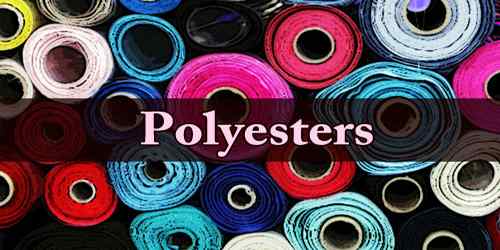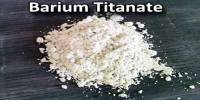Polyester is a category of synthetic polymers that consisted of multiple chemical repeating units connected by groups of esters (CO-O). As a selected material, it most ordinarily refers to a sort called polyethylene terephthalate (PET). As fibers, polyester could be a term often defined as “long-chain polymers chemically composed of a minimum of 85 percent by weight of an ester and a glycol and a terephthalic acid”. Natural polyesters are biodegradable, and a few synthetic ones, but most synthetic polyesters are not. The material is commonly used in clothing.
Polyesters include naturally occurring chemicals, such as plant cuticles, and synthetics, such as polybutyrate, by step-growth polymerization. Polyesters display a good array of properties and practical applications; permanent-press fabrics, disposable soft-drink bottles, compact discs, rubber tires, and enamel paints represent only some of the products made of this group. Liquid crystalline polyesters are among the primary industrially used liquid polymers. they’re used for their mechanical properties and heat-resistance.
Polyesters most typically prepared from a condensation reaction between organic alcohol (containing hydroxyl (OH) groups) and carboxylic acid (containing carboxyl (COOH) groups). Most polyester which is synthetic are not biodegradable. Polyester may be either a thermoplastic or thermoset, depending on the chemical structure. There are polyester resins cured by hardeners; however, the foremost common polyesters are thermoplastics. Among the aliphatic group are the unsaturated polyesters, a category of resins that are molded into fiberglass-reinforced structures like pleasure-boat hulls.
Polyesters are used in the manufacture of bottles (PET), films, tarpaulins, canoes, liquid crystal displays, holograms, filters, condenser dielectric films, wire film insulation, and insulating tapes. The aliphatic polyester is polyglycolic acid, a special kind of degradable polymer which is converted into bioabsorbable surgical sutures. Polyester fibers are highly tenacious and have an E-modulus, low water absorption, and minimal shrinkage compared to other industrial fibers.
The larger and commercially more significant category of ring-containing polyesters is. Polyesters are commonly used as finishes on high-quality wood items such as pianos, guitars, and interiors for the vehicle/yacht. Polyesters also can be telechelic oligomers just like the polycaprolactone diol (PCL) and also the polyethylene adipate diol (PEA); they’re then used as prepolymers. A related polyester is polybutylene terephthalate (PBT); PBT is employed in applications like those of PET, and it’s also used in an exceedingly gum elastic referred to as copolyester elastomer.
Polyester synthesis is typically accomplished through a polycondensation reaction. The general equation for the reaction of a diol with a diacid is:
(n+1) R(OH)2 + n R´(COOH)2 → HO(ROOCR´COO)nROH + 2n H2O
Polyester is a synthetic polymer made from purified terephthalic acid (PTA) or its dimethyl ester (DMT) and monoethylene glycol (MEG). With an 18% market share of all plastic materials produced, it ranges third after polyethylene (33.5%) and polypropylene (19.5%). Alkyd resins are oil-modified polyesters utilized in paints, varnishes, and different kinds of coating materials.
Information Sources:
















